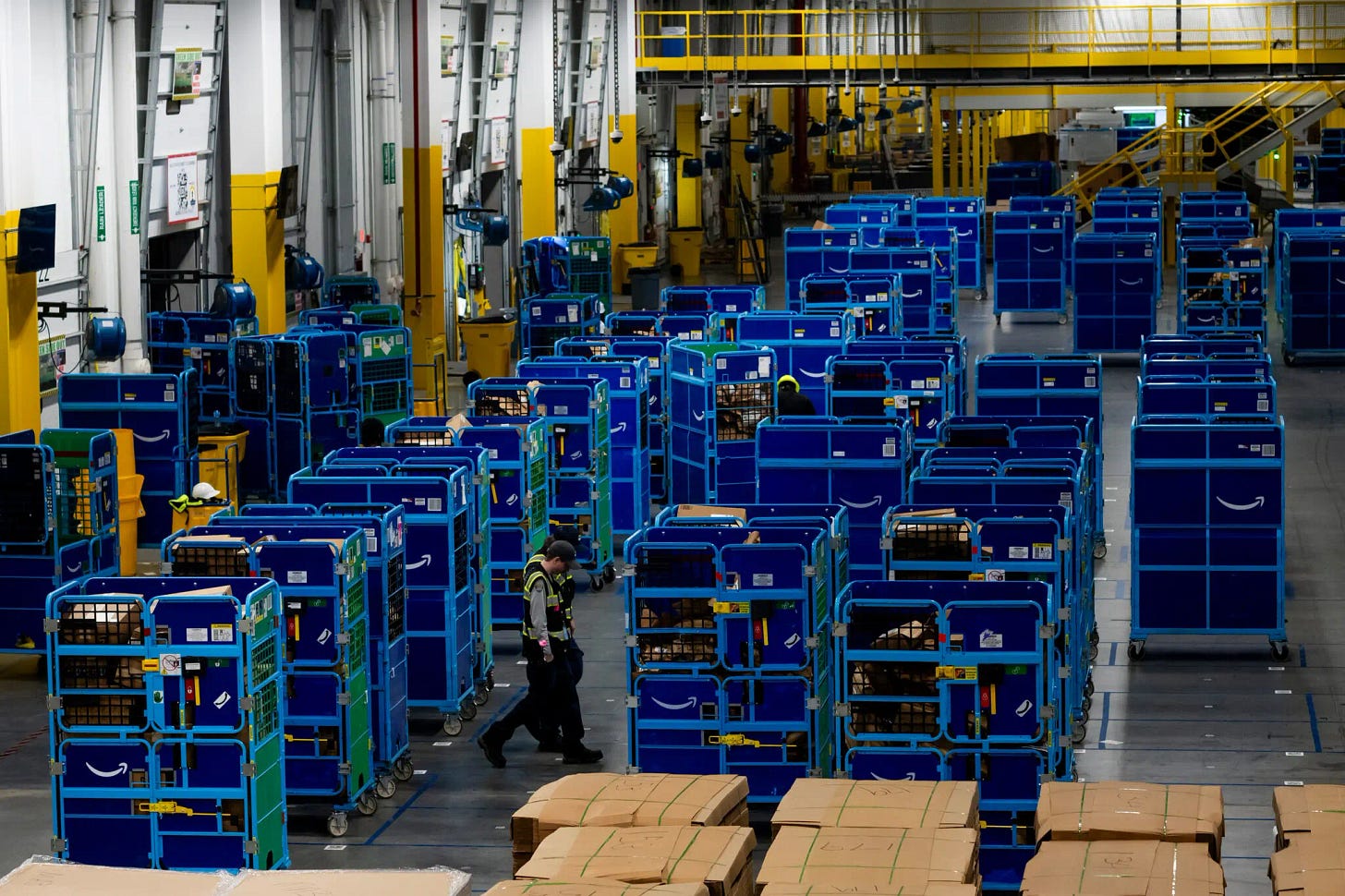Amazon Set to Replace Workforce with Robots
Amazon is quietly preparing for a major shift in its U.S. operations, one that could see more than half a million human jobs replaced by robots over the next decade.
In a corner of Amazon’s massive warehouses, a quiet shift is taking place. The movement of boxes is no longer led by people alone. Machines are stepping in, not just to assist but to replace.
Internal strategy papers and exclusive interviews seen by The New York Times suggest that Amazon is preparing for a future where robots do much of the work once done by humans.
Over the years, Amazon has grown into the second-largest employer in the United States. Its workforce has expanded to nearly 1.2 million people. Yet the company’s automation team believes that within the next few years, it can prevent the need to hire more than 160,000 additional workers. That shift could save about 30 cents for every product Amazon sorts, packs, and delivers.
Executives have told the board that with more automation, Amazon could double its product sales by 2033 without significantly increasing its workforce. The result would be hundreds of thousands of jobs replaced by machines.
Documents show the company’s robotics team is pushing toward a goal that could reshape its entire operation. The plan is to automate as much as 75 per cent of Amazon’s processes, creating warehouses that rely on very few humans.
The company understands the risks of public criticism. It has quietly discussed new ways to present its automation drive, using softer language to frame the story. Instead of “robots” or “artificial intelligence,” internal memos suggest using phrases like “advanced technology” or “cobots,” meaning collaborative robots.
In a response to The Times, Amazon said the internal documents were incomplete and did not represent its full employment plan. A company spokesperson, Kelly Nantel, said Amazon still expects to hire about 250,000 workers for the next holiday season. She also added that the company’s community outreach has nothing to do with automation.
If the plans go ahead, Amazon’s move could reshape blue-collar work across the country. It could also serve as a model for other large employers like Walmart and UPS. For years, Amazon expanded by creating warehouse and delivery jobs that powered the online shopping boom. Now it is using technology to transform those same jobs into something fewer and more technical.
Economist Daron Acemoglu from the Massachusetts Institute of Technology described Amazon’s automation effort as a powerful signal to the rest of the industry. Once the company proves it can profitably replace people with machines, others will follow quickly, he said.
Internal reports viewed by The Times reveal that Amazon’s automation department, with over 3,000 engineers and corporate employees, is driving this push. The company’s operations chief, Udit Madan, said automation has long helped Amazon create new opportunities in other areas, such as expanding rural delivery stations.
The pandemic years accelerated this transformation. Online shopping soared, and Amazon’s workforce exploded. Once the wave slowed, the company shifted focus from expansion to efficiency. By early 2024, executives presented an updated automation plan to the board, cutting projected costs to below ten billion dollars and raising expected savings to over twelve billion between 2025 and 2027.
Chief Executive Andy Jassy has continued this focus on efficiency. Analysts say robots could significantly boost profits as Amazon integrates more than a million machines already working across its global network.
In Shreveport, Louisiana, that future has already started. About 160 workers there now serve as robotics technicians earning over twenty-four dollars an hour, while most of the two thousand employees handle traditional warehouse duties starting at nineteen fifty. The company’s training programs have produced nearly five thousand mechatronics specialists since 2019.
Still, there are fears about who will be left behind. Many warehouse workers are people of colour, and experts warn that automation could hit these communities hardest. In Georgia, job seekers near the Stone Mountain warehouse say listings have slowed, unaware that Amazon plans to reduce staff naturally as the site transitions to a robotic facility.
The company that once defined modern warehouse work is now building a future where machines take the lead, humans keep them running, and traditional jobs slowly fade into history.
Source: The New York Times



Hey, great read as always. Reminds me of my AI studys.